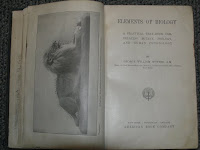Origins 2011: Day 2

The second day of the Origins 2011 conference was dedicated to the technical geology presentations. We got an update on the Coconino sandstone project from John Whitmore, and we had a lively session on the Flood/post-Flood boundary. Since we had a few talks cancelled, we decided to use the extra time to tour the Museum of Geology at the South Dakota School of Mines and Technology. We closed the day with John Morris's reflections on The Genesis Flood . That was a great opportunity to recall the importance of the book, and we learned that Walter Lammerts was tough to sit next to in the car. Who knew? At our business meeting, we voted in a new member of the Executive Council of the Creation Biology Society: Tom Hennigan. Welcome, Tom! We also announced next year's conference venue, Patrick Henry College in Purcellville, VA. We've got one more day of the conference, beginning with my plenary on "Frontiers in Creation Biology." Feedback? Email me at to...




